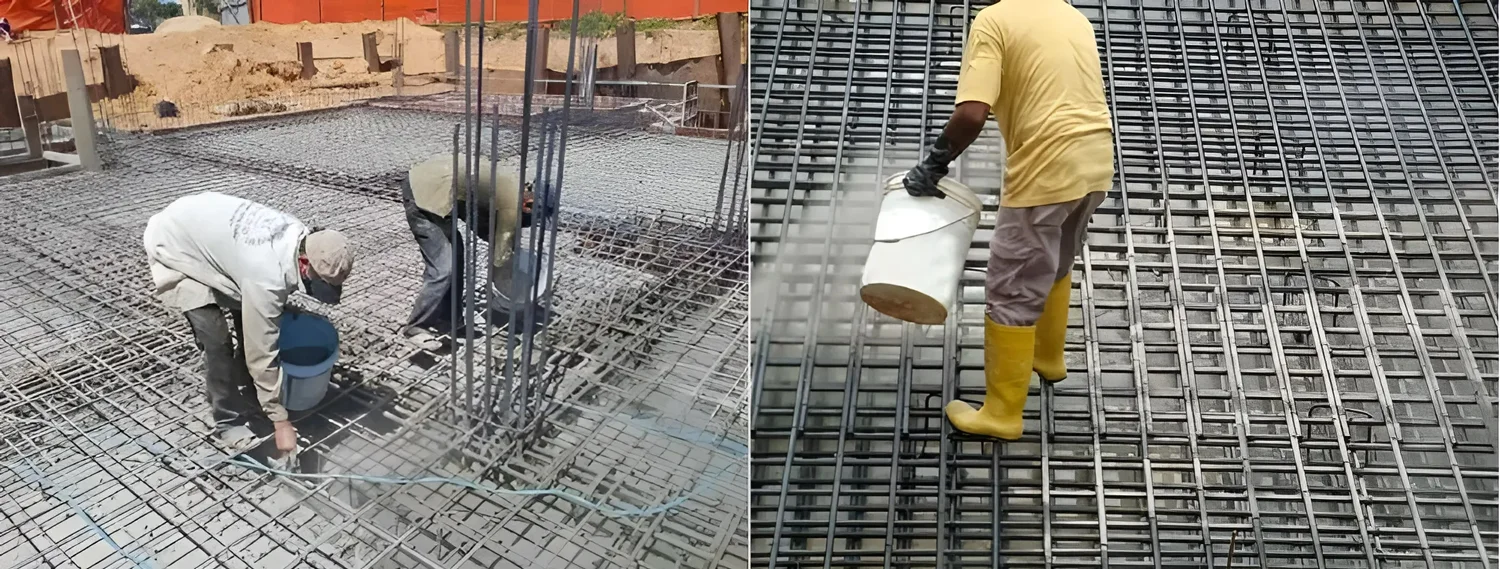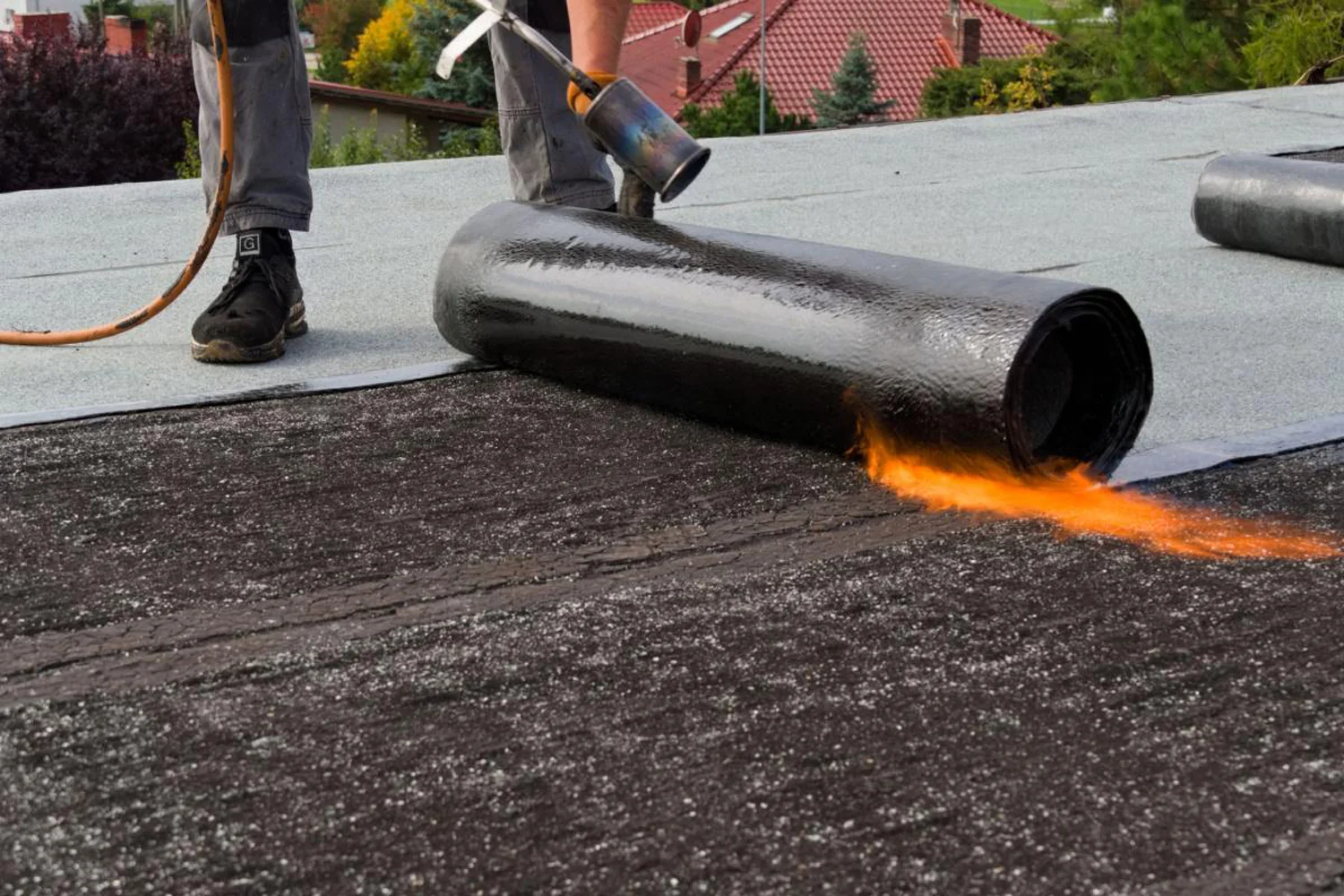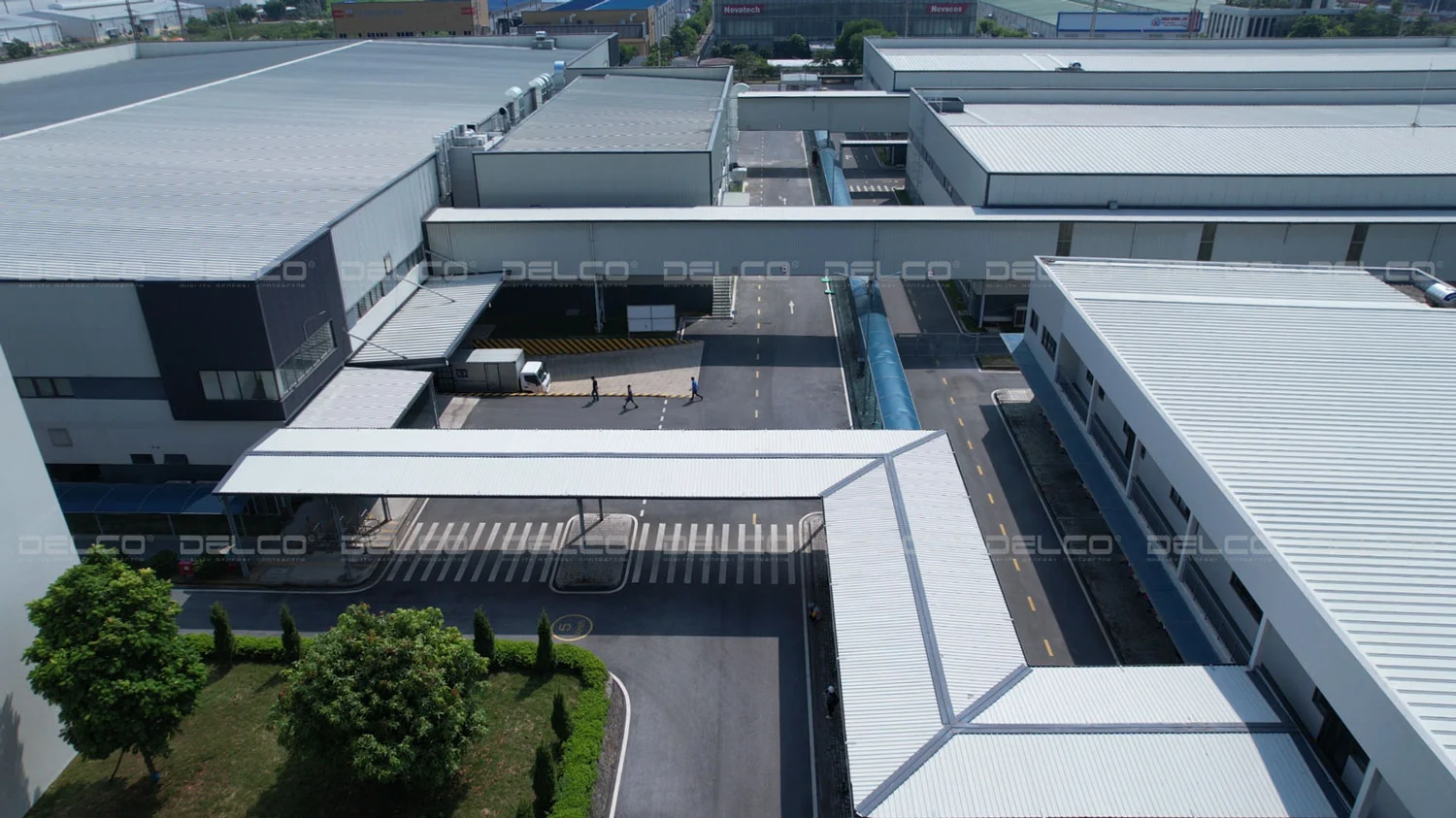Depending on the location and waterproofing requirements, investors can choose appropriate waterproofing solutions, helping to optimize costs and ensure efficiency.
Waterproofing methods for pipe
Pipes passing through the water tank, the toilet area’s floor, or the rooftop floor such as water and drain pipes require effective waterproofing to avoid water leakage causing mold and damage to the construction structure.
Use non-shrink grout and swellable waterstops
Combining non-shrink grout and swellable waterstops is an effective waterproofing solution implemented by many contractors. In particular, non-shrink grout is hydraulic cement grout that will not shrink when hardened under appropriate environmental conditions allowing contractors to accurately control the expansion of the grout. This product has high waterproofing, anti-corrosion, good bearing capacity, and compressive strength up to M400, M600, M800.

Besides, swellable waterstops are often made from butyl rubber combined with hydrophilic chemicals such as polymer or sodium bentonite. When exposed to water, the swellable waterstops will swell, creating compression pressure at the joints, and preventing water from seeping inside. In addition, the product can withstand high hydrostatic pressure of up to 70m and has a long-term waterproofing effect, helping investors save maintenance and warranty costs significantly.
Use waterproof reinforced fiberglass mesh
Waterproof fiberglass mesh is a type of mesh woven from glass fibers often used with waterproofing agents. The fiberglass mesh is the core of the waterproofing membrane, making it better withstand tensile forces and prevent tearing in case the surface shrinks or cracks.
The product allows waterproofing agents to seep into and cover forming a high-performance, durable membrane system. Waterproof fiberglass mesh can also prevent oxidation, acid corrosion, alkalinity and is effectively waterproof. The product has a flat surface, good positioning ability, and is guaranteed not to deform, helping the waterproofing position to be fixed and sturdy.

Waterproofing methods for water tanks
To meet the standards of waterproofing a water tank, we must combine reverse and forward waterproofing, ensuring that water from the outside cannot flow into the tank and the water from the tank cannot leak out.
Waterproof with a crystalline waterproofing agent
To prevent water from entering the tank, using a crystalline waterproofing agent sprinkled on the bottom of the tank or mixed with concrete is the optimal and commonly used solution. When exposed to water, waterproofing crystals will react and create a new substance that seals the pores in concrete, effectively preventing water from seeping through and ensuring waterproofing.
Besides, to waterproof the tank wall, we can apply a waterproofing membrane using specialized materials to ensure that the water tank is waterproofed from the tank’s bottom to the tank wall.

Forward waterproof by applying a waterproof membrane
One of the optimal waterproofing measures to prevent water inside the tank from leaking out is using liquid membrane waterproofing. There are many different types of liquid membrane materials. Investors can choose bitumen-based, cement-based, silicate-based, etc., depending on the requirements of each waterproofing location.
For drinking water tanks, waterproofing substances must be non-toxic and safe for human health. Choosing a waterproofing substance with a health safety certificate issued by a reputable organization is necessary and investors must pay attention to it.

Waterproofing methods for basement walls and floors
Waterproof the walls by applying a waterproof membrane
Using waterproof paint such as epoxy paint and acrylic paint is a popular and effective waterproofing method. These types of paints have high water resistance and good adhesion. When applied, the paint layers will seep into the mortar surface, covering cracks with water-resistant compounds, thereby effectively waterproofing basement walls.

Use waterstop
The basement floor can be waterproofed using a crystalline waterproofing agent similar to the process of waterproofing the bottom of a water tank. However, for the basement, the contractor must use additional waterstop to waterproof the joints.
Waterstop is usually made from PVC plastic with good elasticity, high durability and resistance to corrosion from chemicals/metals. This material is added to the joints of concrete to prevent water from seeping through these locations, causing mold and damage to the building.

Waterproofing methods for roof and toilet floors
Use torch-on waterproofing membrane
The torch-on waterproofing membrane is made from a mixture of bitumen and Atactic Polypropylene, with a Polyester mesh inside. The product has good waterproofing and heat resistance, high durability, and the ability to withstand heavy loads, suitable for waterproofing roof floors of large projects and outdoor projects, as well as for the hot and humid climate of Vietnam. However, due to its large thickness and size, in uneven and crooked locations, it is necessary to cut the torch-on membrane, requiring the construction team to have high technical skills to do it properly to avoid easily peeling off after a period of use.
Use waterproof concrete with penetron additive
Penetron is a crystalline waterproofing additive composed of cement/quartz sand and other specialized active ingredients. These active ingredients will react with the water inside the concrete to create an insoluble crystalline structure that helps heal cracks in the concrete. Therefore, the concrete will be regularly sealed to help prevent the seepage of water and other agents. The product has high chemical and corrosion resistance and does not contain volatile organic content, making it extremely safe for users.

Penetron will be mixed in the concrete tanker right at the construction site before being discharged into the pump. This additive will be mixed with water and cement and then poured into the tank truck’s hopper, rotating quickly for 2-3 minutes to mix the ingredients.
See more: Considerations when designing and constructing the factory’s M.E.P system
See more: 5 Construction Industry Trends for 2024






